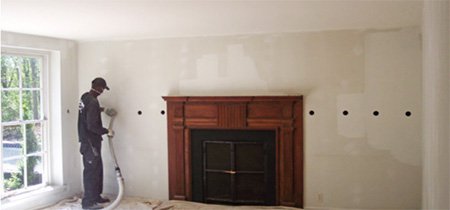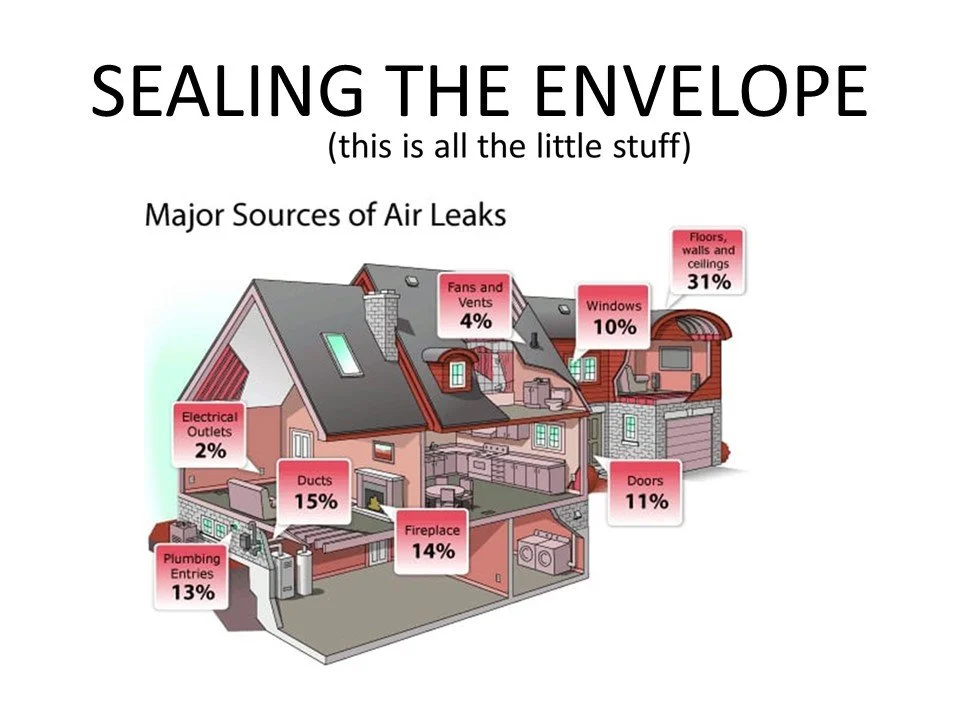
Retrofit your home
Your home can be more comfortable, use less energy, and have better air quality.
Make it air tight.
Then insulate.
Overview
Energy retrofits generally involve air sealing and insulating the building envelope (the surfaces that separate outdoors from indoors) to reduce the demand for heating and cooling. “Contemporary low-energy homes do not waste heat and strive to block airflows that carry water through any gaps in the weather shell.” (Passive House Details, p.5)
Audit it. Get an expert.
See our resources section for local energy auditors. This will tell you if more areas of the home need attention. Are the doors weather stripped? Window frames tightly sealed?
Ventilate.
Install a heat recovery ventilator (HRV) prior to air sealing and insulating. These systems ensure that fresh, clean air enters your home warmed (or cooled) by vented stale air.
Thermal imaging shows where heat is lost in your home.
Air Seal. Then Insulate.
“Striving for high performance by adding insulation alone is futile if heat is conveyed through the envelope on streams of air” (Passive House Details, p.9). The combination of an uninterrupted airtight shell with continuous thick insulation is called super-insulation. This important step reduces energy loss from the building as much as possible. Once this is completed, do an energy audit to locate any areas of heat loss that still need to be sealed.
A blower door test evaluates the air tightness of your home.
Super-insulate a house in this order:
Attic floor or underside of roof can be air sealed with spray foam and insulated with thick layers of fiberglass batt
Floor or foundation walls can be air sealed and insulated with a thick layer of spray foam
Walls - insulation can be blown into wall cavities or added to exterior walls
Chimney – closing the chimney under spray foam and fiberglass batt at the level of the attic floor effectively closes the draft. An electric fireplace can be installed that requires no ventilation.
Windows/skylights – some options
Most effective but expensive are upgrades to the highest quality windows available
Exterior Storm windows
Interior storm windows (for example Indow Windows) effectively seal out drafts, smoke and pollen and are removable.
Doors should be weather stripped to prevent drafts


